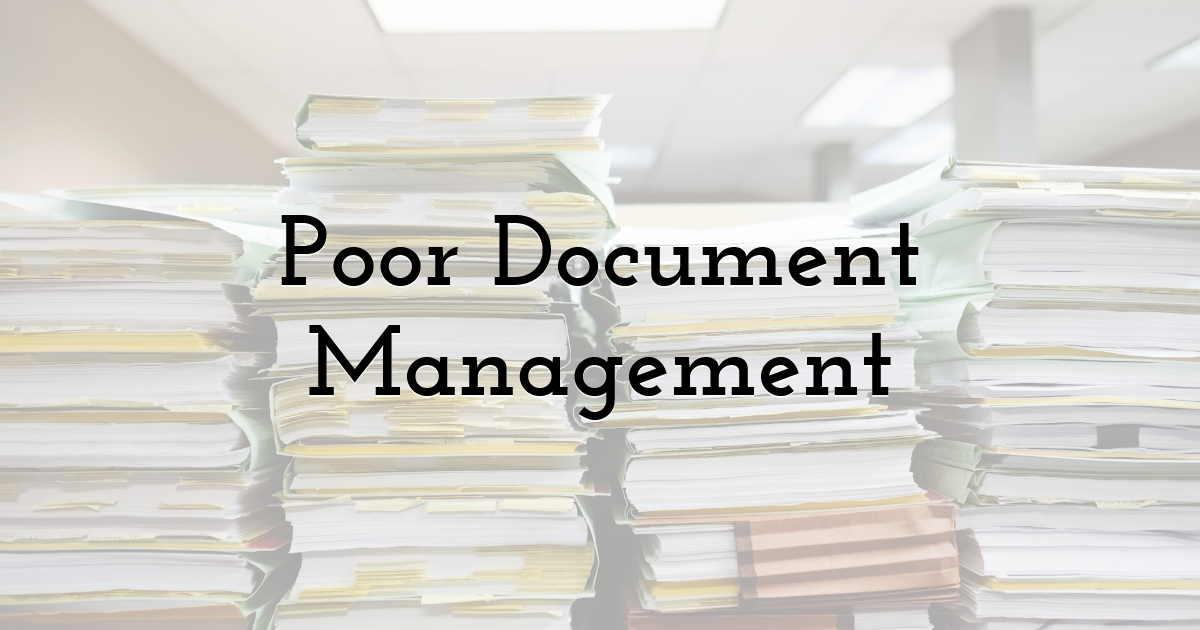5 Common Redaction Mistakes Companies Make - And How AI Can Fix Them

In an age where data protection is paramount, redacting sensitive information has become a crucial aspect of compliance and privacy management for businesses throughout the UK. However, even well-intentioned organisations often stumble during this important task. While traditional methods of redaction, such as manual processes or basic software tools, serve as starting points, they frequently fall short. Understanding the common pitfalls that companies encounter can help mitigate risk and enhance data protection efforts.
1. Incomplete Redaction

One of the most prevalent mistakes in redaction is leaving sensitive information visible, even after an attempt has been made to obscure it. This oversight can occur when several layers of documents—like revisions or comments—are not properly addressed. For example, a company may redact an employee's confidential salary details but fail to remove related discussions in the comments section.
The Solution: AI-Powered Tools
AI technologies, such as those offered by platforms like Secure Redact, can streamline and enhance the redaction process. These systems scan documents thoroughly, identifying all instances of sensitive data that need redaction. By leveraging machine learning algorithms, AI solutions can continually improve their detection capabilities, ensuring that nothing slips through the cracks.
2. Slow Turnaround Times

The redaction process can be incredibly time-consuming, particularly in organisations that handle large volumes of documents regularly. Delays often lead to missed deadlines, increased costs, and potential legal repercussions.
The Solution: Automation
By integrating automation into their redaction processes, companies can significantly reduce the time it takes to redact information. AI tools can quickly process extensive documents, allowing employees to focus on more strategic tasks. Rather than spending hours manually redacting sensitive information, businesses can rely on technology to do the heavy lifting.
3. Incorrect Application of Redaction Techniques

Redaction is not a one-size-fits-all endeavour. Different types of documents may require diverse redaction techniques, and misapplying these can lead to improper handling of sensitive information. For instance, using a permanent marker on paper copies can be effective, but it’s not a reliable method for digital files.
The Solution: Standardised Protocols
Organisations should establish clear redaction protocols tailored to the type of data they handle. AI can assist in creating these standards by analysing documents and suggesting appropriate redaction techniques based on data type and context.
4. Lack of Staff Training

Even with the best tools at one’s disposal, human error often remains a significant risk in the redaction process. Many staff members may not fully understand the importance of redaction or, worse, how to carry it out effectively.
The Solution: Continuous Education
Investing in training programmes focused on data protection and redaction can empower employees and foster a culture of compliance. This should include practical sessions that demonstrate the difference between secure and insecure redaction methods. Incorporating AI tools in staff training allows employees to gain hands-on experience, making them more adept at navigating complex redaction challenges.
5. Poor Document Management

Documentation often hides a vast amount of sensitive information that can be difficult to track and manage effectively. Without a proper system in place, potentially sensitive documents may remain unreviewed and unrevised, significantly increasing the risk of data breaches.
The Solution: Robust Document Management Systems
Integrating AI with robust document management systems can simplify the tracking and management of sensitive information. An effective system not only identifies documents containing sensitive data but also enforces proactive measures such as automated alerts for compliance checks. This allows for an efficient catalogue that aids in retrieval and redaction processes.
Final Thoughts:
Navigating the complexities of redaction in this data-driven age is undoubtedly challenging. However, by recognising common pitfalls and leveraging AI tools, companies can significantly bolster their data protection strategies. From ensuring complete redaction and improving efficiency to establishing clear protocols and investing in staff training, the right approach can lead to a culture of data security.
Moreover, as the landscape of data privacy continues to evolve, implementing modern solutions like Secure Redact not only protects sensitive information but also aligns with industry regulations. As businesses face increasing scrutiny regarding data handling practices, a commitment to adopting innovative technologies will ultimately serve as a competitive advantage.
By remaining vigilant and proactive, organisations can turn their redaction processes from a potential risk into a vital asset for compliance and reputation management. In the end, the importance of effective redaction cannot be overstated—it’s not just about protecting data; it’s about building trust with clients and stakeholders alike.
Until next time, Be creative! - Pix'sTory
Recommended posts
-

5 Common Redaction Mistakes Companies Make - And How AI Can Fix Them
Read More › -

Design.com vs Designs.ai: Which Logo Tool Delivers Better Results?
Read More › -

Human Developers + AI Tools: The Winning Duo for Web Scalability
Read More › -

Data-Driven Roadmaps: Prioritizing Investments in Veracode Alternatives
Read More › -

When Templates Break: How Automated Testing Can Prevent Visual Regression...
Read More › -

Why AI App Builders Are Becoming the Ultimate Business Partner for Artist...
Read More ›
